The revival of Hanfu culture brings new trends: while many women love wearing traditional outfits, men’s Hanfu styles are gaining popularity. Unlike modern clothes, ancient Hanfu highlights masculine elegance through loose-fitting round-neck robes and classic patterns like cloud and crane motifs. These details create a scholarly yet refined look, reminiscent of noble gentlemen in classical literature. Explore more about this blend of tradition and contemporary fashion if Chinese cultural aesthetics interest you.
Men also like to wear Hanfu
Currently, not only women but an increasing number of men are incorporating Hanfu into their daily attire. Wearing Hanfu for leisure is no longer exclusively a woman’s domain, and attitudes towards men wearing Hanfu have shifted, with more and more men in Hanfu making appearances in public view.
Currently, not only women but an increasing number of men are incorporating Hanfu into their daily attire. Wearing Hanfu for leisure is no longer exclusively a woman’s domain, and attitudes towards men wearing Hanfu have shifted, with more and more men in Hanfu making appearances in public view.
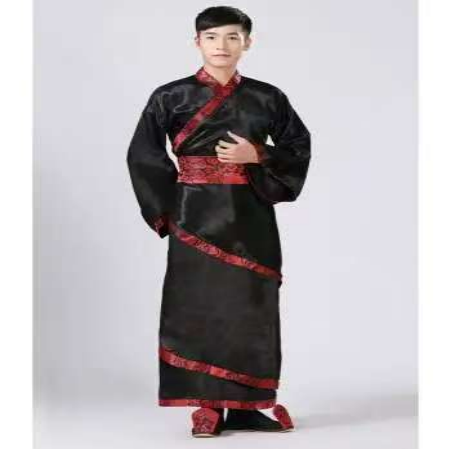
The situation used to be that parents, including school teachers, would prevent men, especially those wearing Ruqun(襦裙), from doing so, considering it women’s clothing. In fact, Ruqun is also a type of men’s Hanfu, often worn by male characters in historical dramas. The main difference between men’s and women’s Ruqun lies in the design of the robes, which for men are typically straight-hemmed, appearing more flowing and showcasing a man’s charm better. As the culture of Hanfu becomes increasingly popular, it is not only suitable for ancient times but also aligns with modern men’s aesthetics. What other typical styles of men’s Hanfu are there?

Design details of men’s Hanfu
As a major component of ancient Chinese clothing, men’s Hanfu has evolved from the quju(曲裾) and zhiju(直裾) of the Qin and Han dynasties to theround-collared robe, taoist robe, (short tunic, and half-arm sleeve of the Tang and Ming dynasties. Changes in details such as collars, side openings, and sleeve shapes offer modern people unique experiences of different eras.
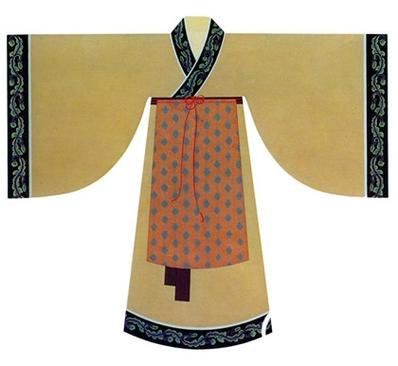
Qin and Han Men’s Hanfu
The Quju Robe and Zhiju Robe Robe were the main types of men’s clothing during the Qin and Han dynasties. According to the “Book of Rites,” the Quju Robe was based on thedeep garment pattern, incorporating design elements such as cuffs and binding edges. The robe’s cuffs needed to wrap around the back before coming forward again, finally fastened with a belt. It looked very elegant overall. The Zhiju Robe did not require wrapping the cuffs; it hung straight down from the front, making it more convenient for daily activities compared to the Quju Robe. Its design was simple yet exuded elegance and was often considered a classic in men’s Hanfu.
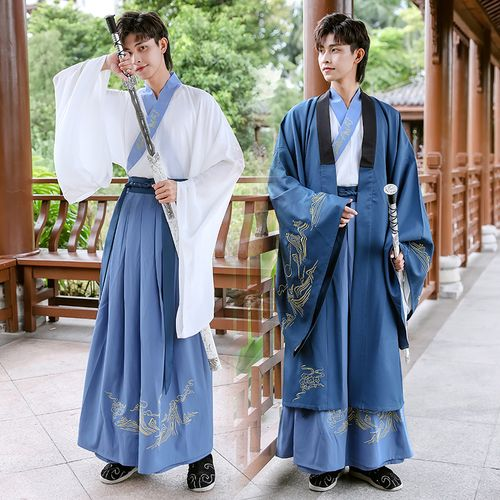
Wei, Jin, and Northern and Southern Dynasties Men’s Hanfu
During the Wei, Jin, and Northern and Southern Dynasties, men’s Hanfu introduced the “衫” (robe), which differed from the robes of the Qin and Han dynasties by changing from a crossed collar to a straight collar, making it more convenient to wear daily. At that time, men’s clothing was characterized by its loose fit.

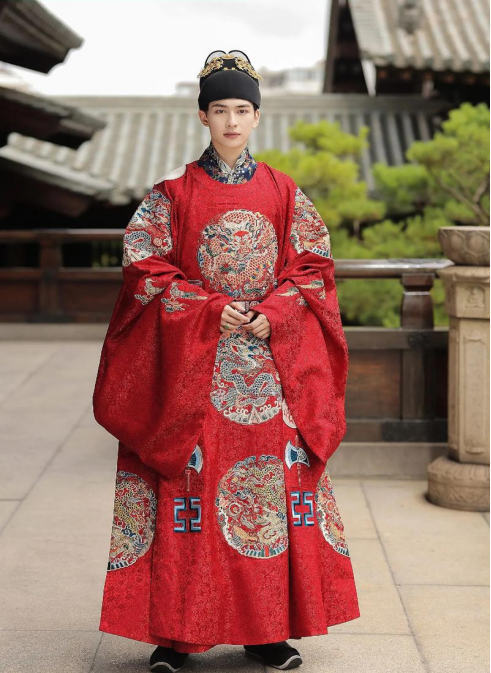
Tang to Ming Dynasty Men’s Hanfu
The Tang to Ming dynasty period witnessed the peak of men’s clothing in terms of both style and craftsmanship, with distinctive features. Compared to previous periods, these clothes featured round, straight, and horizontal necklines, with smooth and simple lines. The patterns of sleeves, robe bodies, and robe hems became more regulated and harmonious. Among them, the typical men’s Hanfu included the rounded-collared narrow-sleeved robe, yisa (a type of garment), half-arm sleeve, taoist robe, and great cloak. The horizontal neckline design did not appear until the Ming dynasty, and for the first time in men’s Ming dynasty Hanfu, button designs were introduced.
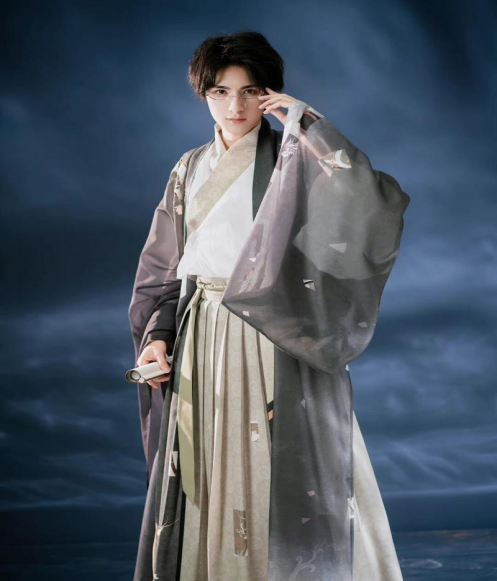
Modern Men’s Hanfu
Modern men’s Hanfu has been improved from traditional styles. By adjusting the width of sleeves and the length of the garment to better fit modern body characteristics, it uses modern fabrics and design details such as zippers, hidden buttons, and pockets. Incorporating fashionable elements into the traditional elegant style with flowing sleeves, it showcases personality while maintaining cultural charm.
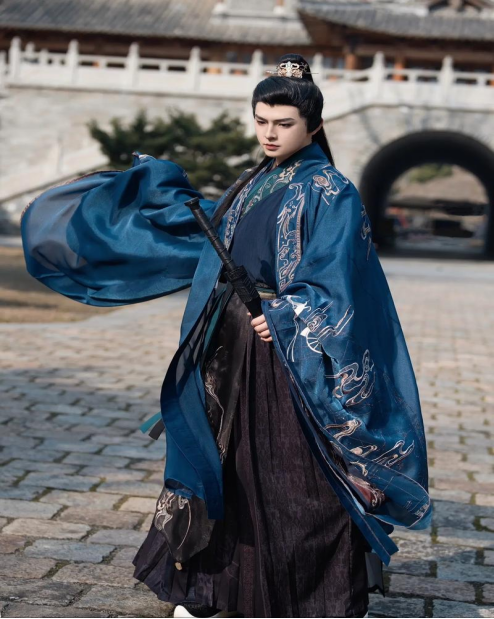
Hanfu is no longer considered odd attire by people. With more and more men embracing Hanfu, its designs have also become less monotonous. If you have a dream of wandering through a martial world, then Hanfu is the best choice.







